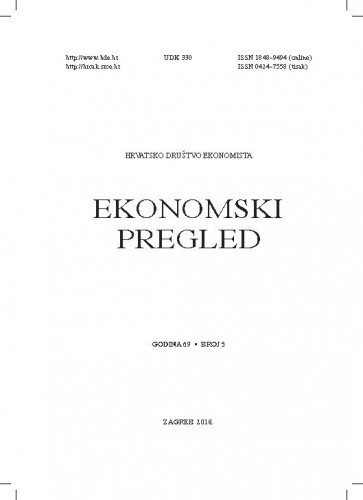The purpose of this study is to examine and better understand the effects of foreign direct investments on employment in Montenegro over the period from 2005-2017. Time series data on a quarterly basis, obtained from Central Bank of Montenegro, Statistical Office of Montenegro - MONSTAT and Employment Office of Montenegro were used in this research. To perform time series stationary testing, Dickey-Fuller test (ADF) and Perron test were used, i.e. the unit root tests, while the examination of the effects of foreign direct investments on employment was performed using the regression analysis with the least square method. The results of the research, obtained by the evaluation of the simple linear econometric model show that if foreign direct investments increase by 1%, employment in Montenegro can be expected to increase by an average of 0.0058%. However, the regression analysis results clearly show that over the total observed period, the influence of foreign direct investments on employment does not have statistical significance. The obtained results are not surprising, considering the fact that the observed period is characterized by a modest share of the greenfield investment within the total structure of foreign direct investments in the Montenegrin economy.; Cilj ovog rada je ispitivanje i bolje razumijevanje utjecaja inozemnih izravnih ulaganja na zaposlenost u Crnoj Gori u vremenskom razdoblju od 2005. - 2017. godine. Za potrebe istraživanja korišteni su kvartalni podaci vremenskih serija, dobiveni od Centralne banke Crne Gore, Monstata i Zavoda za zapošljavanje. U cilju testiranja stacionarnosti vremenskih serija, korišteni su testovi jediničnih korjenova, Dickey-Fuller test (ADF) i Perronov test, dok se ispitivanje utjecaja inozemnih izravnih ulaganja na zaposlenost provelo regresijskom analizom odnosno metodom najmanjih kvadrata. Rezultati istraživanja dobiveni ocjenom jednostavnog linearnog ekonometrijskog modela, pokazuju da ukoliko se strane direktne investicije povećaju za 1%, može se očekivati povećanje zaposlenosti u prosjeku od 0,0058%. Međutim, tokom cjelokupnog promatranog razdoblja, rezultati regresije jasno ukazuju da utjecaj inozemnih izravnih ulaganja na zaposlenost u Crnoj Gori nema statističku značajnost. Dobiveni rezultati nisu iznenađujući, ukoliko se ima na umu činjenica da promatrano razdoblje karakterizira skroman udio greenfield investicije u ukupnoj strukturi inozemnih izravnih ulaganja u crnogorskoj ekonomiji.
Sažetak

 Ekonomski pregled : mjesečnik Hrvatskog društva ekonomista : 69,5(2018) / glavni i odgovorni urednik Dragomir Vojnić.
Ekonomski pregled : mjesečnik Hrvatskog društva ekonomista : 69,5(2018) / glavni i odgovorni urednik Dragomir Vojnić.